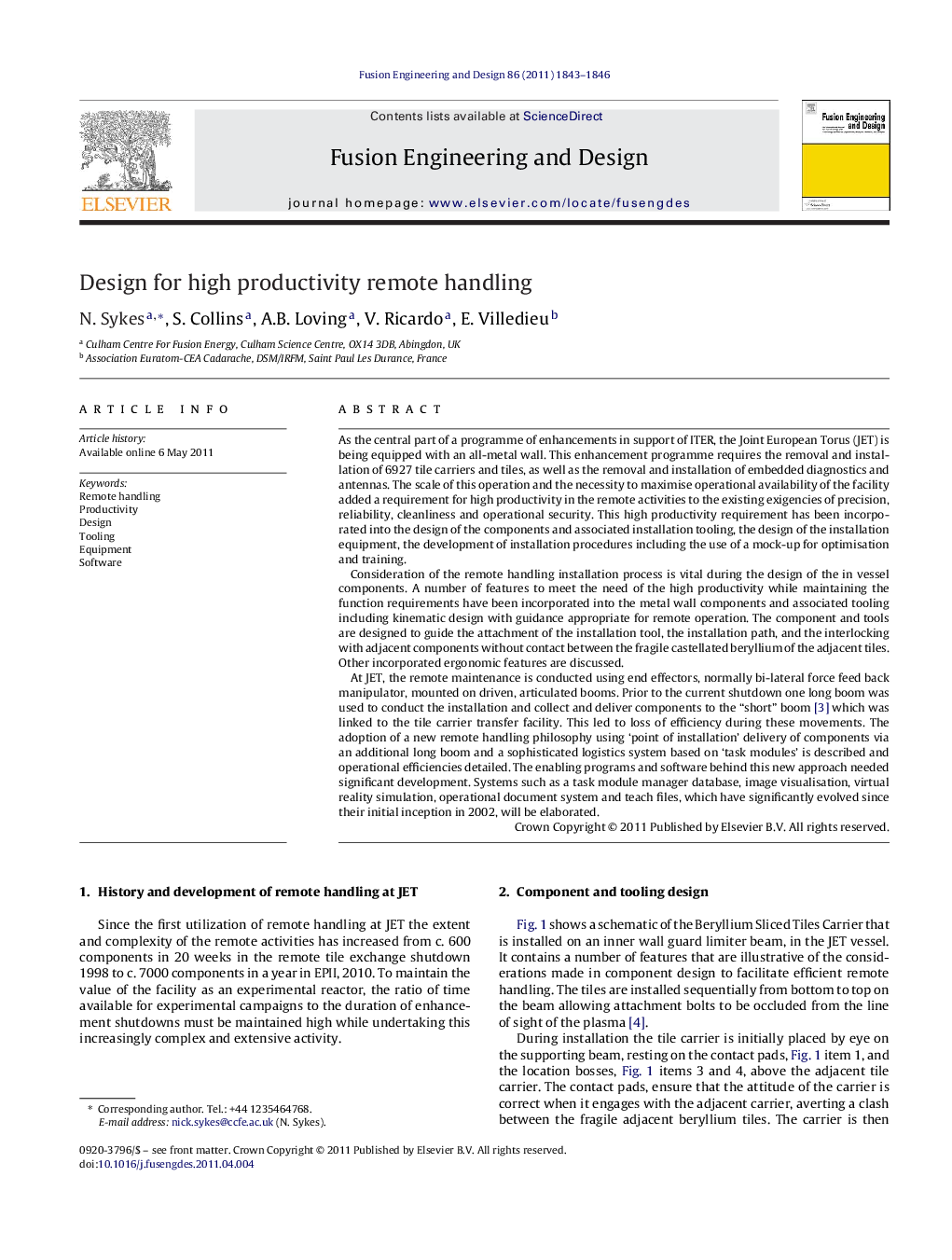| Article ID | Journal | Published Year | Pages | File Type |
|---|---|---|---|---|
| 271862 | Fusion Engineering and Design | 2011 | 4 Pages |
As the central part of a programme of enhancements in support of ITER, the Joint European Torus (JET) is being equipped with an all-metal wall. This enhancement programme requires the removal and installation of 6927 tile carriers and tiles, as well as the removal and installation of embedded diagnostics and antennas. The scale of this operation and the necessity to maximise operational availability of the facility added a requirement for high productivity in the remote activities to the existing exigencies of precision, reliability, cleanliness and operational security. This high productivity requirement has been incorporated into the design of the components and associated installation tooling, the design of the installation equipment, the development of installation procedures including the use of a mock-up for optimisation and training.Consideration of the remote handling installation process is vital during the design of the in vessel components. A number of features to meet the need of the high productivity while maintaining the function requirements have been incorporated into the metal wall components and associated tooling including kinematic design with guidance appropriate for remote operation. The component and tools are designed to guide the attachment of the installation tool, the installation path, and the interlocking with adjacent components without contact between the fragile castellated beryllium of the adjacent tiles. Other incorporated ergonomic features are discussed.At JET, the remote maintenance is conducted using end effectors, normally bi-lateral force feed back manipulator, mounted on driven, articulated booms. Prior to the current shutdown one long boom was used to conduct the installation and collect and deliver components to the “short” boom [3] which was linked to the tile carrier transfer facility. This led to loss of efficiency during these movements. The adoption of a new remote handling philosophy using ‘point of installation’ delivery of components via an additional long boom and a sophisticated logistics system based on ‘task modules’ is described and operational efficiencies detailed. The enabling programs and software behind this new approach needed significant development. Systems such as a task module manager database, image visualisation, virtual reality simulation, operational document system and teach files, which have significantly evolved since their initial inception in 2002, will be elaborated.
